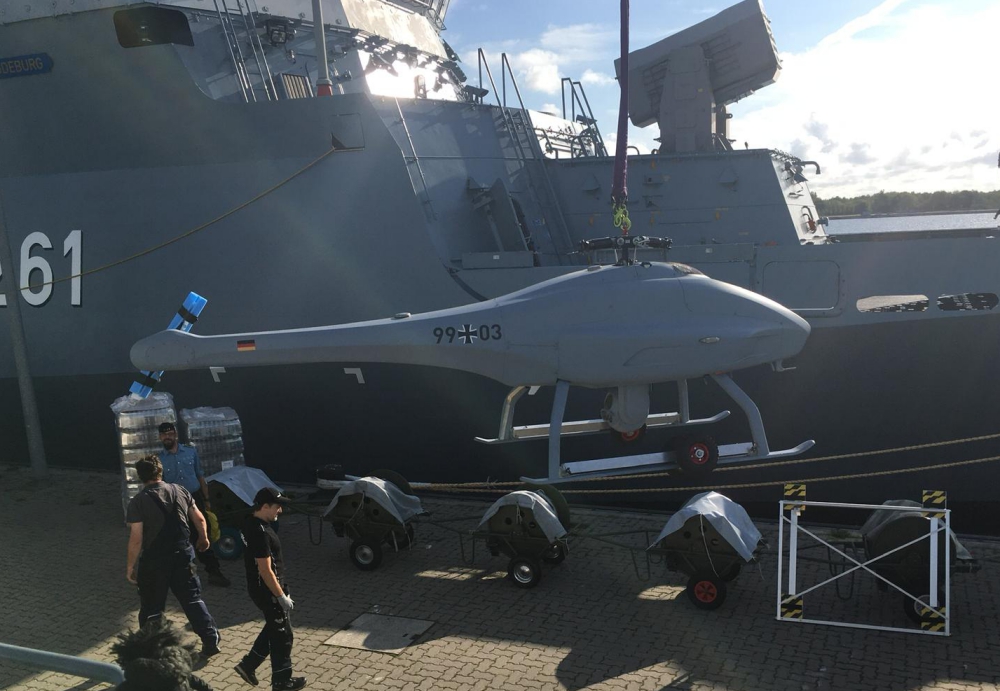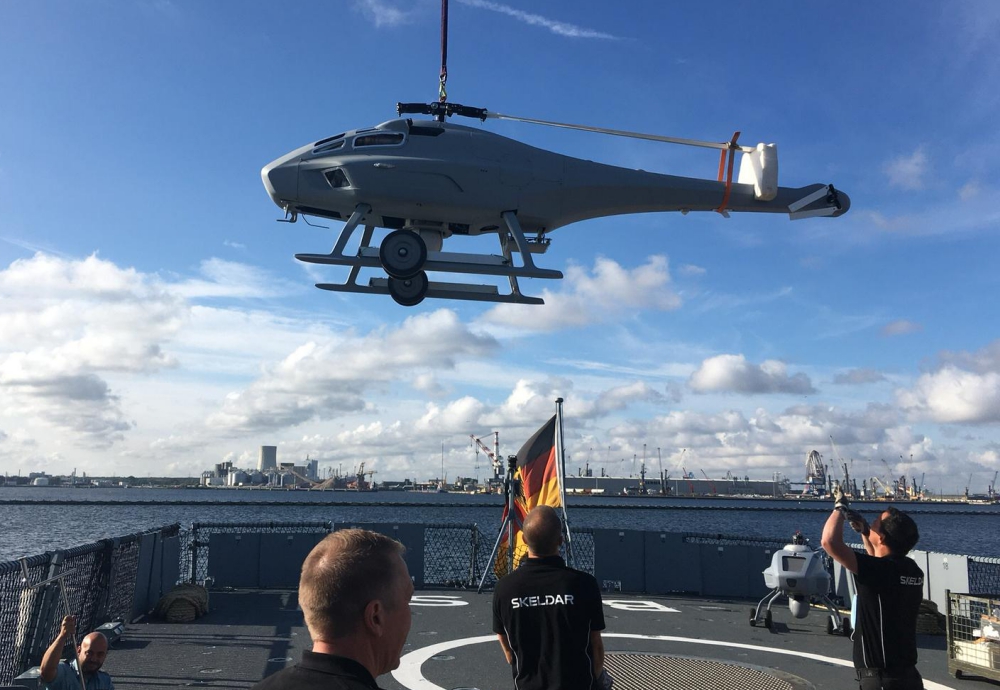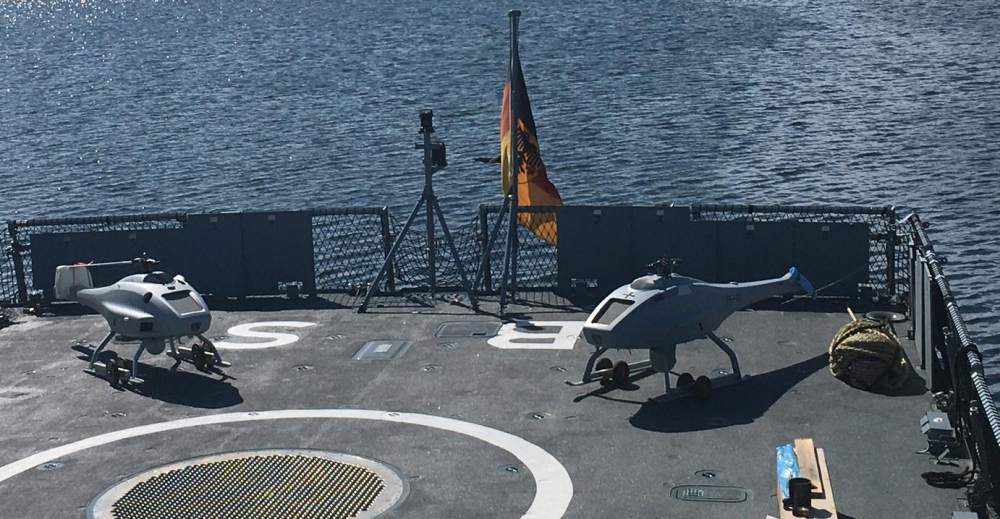The German Navy (Deutsche Marine) has just started at-sea tests of the SKELDAR V200 vertical take off and landing (VTOL) unmanned aerial vehicle (UAV) aboard first-in-class K130 corvette “Braunschweig”.
Pictures shared on social media by the Commander of the German Naval Aviation show two Sea Falcon (the German Navy designation for the V-200) being lifted aboard the corvette, in Kiel.
The Commander explained on Twitter that “the tests are beginning, first on deck and then dynamically. It is making progress”.
For the record, UMS Skeldar won a contract back in August 2018 for the supply of a SKELDAR V-200 unmanned aircraft system consisting of two unmanned aerial vehicles as sensor carriers, integration of the system into the K130 corvette, a spare parts package and training of ship-borne operators and maintenance personnel. The contract was concluded with the main contractor Elektroniksystem- und Logistik-GmbH (ESG) and the subcontractors UMS SKELDAR and FR. Lürssen Werft GmbH & Co. KG.
The goal of the procurement contract is to supply a new, unmanned, airborne reconnaissance system for the German Navy specified by the Federal military procurement agency Federal Office of Bundeswehr Equipment, Information Technology and In-Service Support (BAAINBw).
UMS Skeldar said at the time in a press release: “Provided ready for seaborne missions, with multiple payload options, the world-leading maritime rotary unmanned aerial system is suitable for C4ISR (Command, Control, Communications, Computers, Intelligence, Surveillance and Reconnaissance) and SAR (Search and Rescue) roles. SKELDAR V-200 uses Jet A-1, JP5 and JP8, kerosene-based fuel (NATO code F-34, F-44).”
The same VTOL UAV was selected last month as part of the naval mine countermeasures capability replacement which will supply twelve mine hunters equipped with drone systems (Toolbox) to the Belgian and Royal Netherlands navies.
Source: Naval News



